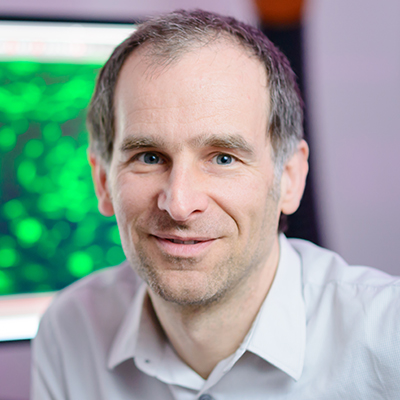“I love to spend time at the microscope”

Prof. Luschnig, what scientific topic are you working on right now?
In my research group everything revolves around the question of how cells form tubes, for example blood vessels. For this purpose, endothelial cells have to join and form a vascular wall. One of the questions that we concentrate on in this context is: what happens when three of these cells come together and develop a cell contact? In the case of two cells we can imagine the connection like a zipper. A zipper gets jammed, though, when cells come from three sides. We have found a protein that resembles a kind of “three-way zipper” and produces the contact between the three cells. These cell contacts ensure that the vascular wall is mechanically stable and tight. For our work we use the fruit fly Drosophila as a comparatively simple model in which such basic questions relating to cell biology can be easily analysed.
What characterizes you personally as a scientist?
I’m an enthusiastic researcher, I’d prefer to spend more of my time at the microscope, although nowadays I’m afraid I don’t have enough time for that. I also like looking at the data that my team have gathered. I only came to Münster just recently, but I was given a very warm welcome and I feel very much at home here – although I do miss the mountains.
What is your greatest aim as a scientist?
I want to be able to understand and explain the primary processes in the development of organs, such as how cell connections are assembled and dynamically restructured – in molecular detail. Until that is achieved there is still a lot to do and quite a bit of new biology to be discovered. Many scientists nowadays commit themselves to translation, in other words to the transfer of basic research to clinical applications. Translation is of course important, but it is also a difficult challenge, which can only be mastered through interdisciplinary cooperation. In one life you just can’t do everything yourself. As a result, cooperation across the boundaries of individual disciplines is becoming increasingly important.
What’s your favourite “toy” for research – and what can it do?
It’s a confocal laser-scanning microscope which enables extremely sharp images to be made of the inside of embryos and cells. Just ten years it was difficult to imagine how well we can look inside cells today. In particular, dynamic processes can be watched “live”, so to speak, which gives us completely new insights.
Can you remember your happiest moment as a scientist?
One such happy moment was when we found the protein that constitutes the “three-way zipper”. After several years’ work we were suddenly able to look at a sequence with 10,000 letters and we knew that this was the structure we had been looking for all the time.
And what was your biggest frustration?
Actually, there are very few “eureka” moments. What happens more often is that you get frustrated. But after a while you accept that. What I have sometimes found frustrating is when you invest a lot of work in an application for funding and then get a two-line rejection.
Which scientific phenomenon still regularly fascinates you today?
There’s a wide range of areas in biology that I find fascinating today. Although some questions in current research in the field of cell biology are relatively specific – and in most cases you do at least have an idea of which method to use to find an answer –there are still questions that are completely open and it’s often not even clear how they should be approached scientifically. How does our brain work, for example? How are memories stored and retrieved?

